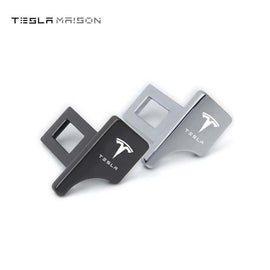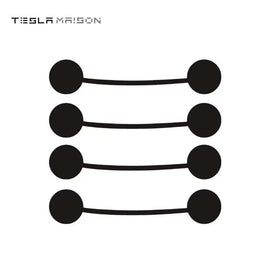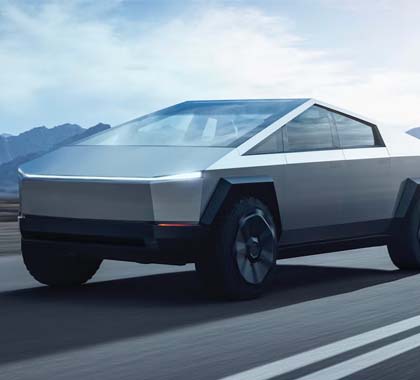Tesla vehicles, which have been on roads for several year, may cause some to wonder about the unique problems that these cars encounter, including leaks and how they can be fixed. Tesla vehicles, like all vehicles, can have performance and service problems. However, they differ from other automobiles in the fact that they're electric. Tesla vehicles therefore have their own set of problems, both in terms what can go awry and how it can be fixed.
What is a guide for troubleshooting Tesla fluid leaks? Several Tesla vehicle owners have reported leaks of water or fluids. For owners to decide whether they should visit a service center or if the leak can be repaired by themselves, it's essential to diagnose the issue and to identify the leak type and source.
Tesla vehicles need less maintenance, but are still subject to some maintenance issues. Tesla owners should know how to solve such potential problems in advance. The last thing any Tesla owner wants is to find out that their car has a problem. By understanding Tesla vehicles as well as how to fix a small leak step by step you may be able avoid taking it to the service center.
How to troubleshoot the Tesla Leak.
When you see that your Tesla has a leak you can troubleshoot it before you rush in to a shop for repairs and diagnostics. It is a process where someone diagnoses and fixes a particular problem. The first step of troubleshooting involves assessing and identifying the general or most obvious possible issue.
Here is a step by step guide on how to fix the leak in your Tesla. It could save you money and time compared to taking it to a Tesla Service Center to be repaired or assessed.
1. Find out the type of leak
Electric cars require less fluids to operate than conventional automobiles. They do not need oil or gasoline. Tesla cars have fewer fluids, so it is easier to determine the source of a problem.
The types of fluids you will find in an electric car are:
- A/C Water: As your vehicle's cooling system cools you, the humidity in the air is removed. The moisture then has to go somewhere. Teslas drain excess water from underneath the car. This is the fluid that is most likely to "leak" under a Tesla.
- A coolant: Electric vehicles that use a thermal-management system, like those in traditional cars, also use a coolant. Addition of coolant to an electric vehicles' maintenance program is part and parcel.
- Brake Fluid: The brake fluid in Teslas should also be checked, as it is the same as all other cars.
- Windshield Fluid: Windshield fluid is also in Teslas and should periodically be added. Also, in colder climes, the windshield fluid should have a winter blend to lower its freezing point.
Tesla vehicles might contain other fluids. The fluids should be kept sealed in order to prevent access.
2. What is the source of your leak?
If you're able to identify the nature of your leak, it can help you troubleshoot and diagnose whether or not the leak requires professional attention, repair or service. In Teslas, the most common fluids that leak are coolant and brake oil.
Air Conditioning Water
This is a perfectly normal occurrence, especially when it is hot and the air conditioning is working hard. Smell the fluid on the floor and run your fingers through it to confirm that this is just water from your vehicle's air conditioning. If it has no scent and is transparent, the fluid from the air conditioner is water.
This is an ideal situation because it means there are no problems and everything looks normal.
Coolant Leaks
It is common for cars to leak coolant (or antifreeze). Even though a coolant leaking isn't a serious issue, it needs to be fixed immediately because the fluid is meant to regulate temperature. If the source of a coolant leak cannot be identified and repaired, this can cause the engine to overheat.
Check for a light blue color in any fluid that has escaped from beneath your Tesla. The coolant color is blue-ish and it has a strong chemical smell.
Brake fluid Leaks
Even though brake fluid leaks occur less frequently than coolant, they can cause serious problems. Brake liquid is typically clear or yellowish. The fluid has a medium consistency and a slightly greasy feeling. Check it immediately if fluids of this kind are found under your vehicle.
When you suspect that the brake fluid in your Tesla car is leaking, it's better to let it be towed by a professional service provider than drive it. It's important to note that the brake system is operated by a hydraulic pressurized system. Brake fluid acts as a fluid that keeps that pressure. A brake leak can cause pressure to drop, and could result in brake failure.
If you notice a fluid leak on your car, the source will be the braking mechanism. You may see the fluid near the wheels, or just under the pedal.
Windshield Fluid Leaks
The number of parts that could leak is very low. Teslas' windshield wipers fluid is filled up under their front hood. It only flows out of the holding containers to the glass.
Windshield fluid comes in a variety of colors, most commonly green or turquoise. Do not confuse it with coolant. To find out if your windshield fluid is leaking, you can check its color. Also, smell the fluid and compare it to the scent of the cap underneath the front hood. Make sure you determine whether it's coolant or windscreen fluid. Both can look the same.
3. Determine the action needed to fix the leak
Some car owner's believe that a fluid leak in a car must be checked and treated professionally by service providers experienced with the make and model of the car, its operation, and its performance. The best service provider to provide any necessary maintenance, repairs or servicing of a vehicle would be a professional.
The owner can save money by diagnosing the problem themselves. This is especially true when it comes to Tesla vehicles. Tesla, a company that is still considered a startup in the eyes of many, has fewer dealerships than its traditional automotive counterparts. And general mechanics cannot work on Teslas.
This low ratio of service supply to service demand adds to the costs for the customer in terms time and travel spent searching for and visiting a Tesla repair center, and also the monetary cost for diagnosing an issue and servicing a vehicle.
Mobile Service
Tesla's mobile service eliminates the need for Tesla owners to visit a Tesla repair shop. Tesla claims 80 percent of repairs on their vehicles can be completed outside of a Tesla service facility. In addition, the company provides 100% mobile coverage to customers who can have their needs met by a technician. Tesla will often cover mobile services so that technicians come to the owners, as opposed to the opposite.
Tesla cars can be troubleshooted to find out the cause and nature of leaks. Then, the corrective action can be taken. When a vehicle owner has identified the nature and cause of a leaking, they can use the Mobile Service feature.
The fact that you can troubleshoot your Tesla leak doesn't mean it should not be professionally diagnosed and repaired by the company, whether through a mobile option or in a physical center. In fact, troubleshooting a Tesla leak can save owners time and money.
Why is My Tesla Leaking water?
Tesla owners who have a leaky water issue may not need to take their vehicle to a Tesla service center. Teslas can leak water for many reasons. Air conditioning condensation is by far the most frequent.
Air Conditioner Condensation
Many times, what car owners mistakenly think is a leak of water may not be one. Consistently, the main cause of water in or around a vehicle comes from condensation. This is often caused by the vehicle's AC. Tesla owners in warm, humid climates will often see water puddles on the ground under their car after they've parked it.
While these water puddles might appear to be the results of leaks or condensation drips they are completely normal.
The air conditioner in non-electric traditional cars stops working as soon as you turn off the engine.
Water In Taillights
Some Tesla cars also have water behind the taillights. This seems to be due to certain design features of Tesla cars that prevent consistent, standard sealing.
You can get the job done in 10 minutes.
Conclusion
They require less maintenance than conventional cars. This is because all-electric vehicles such as Teslas that run without a gasoline generator are more efficient. The fact that the car has fewer moving components and uses a smaller number of fluids is responsible for this.
Tesla cars have fewer liquids than gasoline vehicles, but they still can leak. Tesla owners are required to understand how their vehicles work and troubleshoot any issues, such as fluid leaks. Tesla drivers are able to get the most out of their vehicles by following these tips. They can also avoid making unnecessary and expensive trips to the auto service center.
Tesla's vehicles are also known as "smart", including their ability to perform remote diagnostics. Tesla has claimed that 90% of their issues can be diagnosed remotely.
Tesla's intelligent capabilities may lead owners to completely rely on them for the safety and performance their cars. Although it is rare that any computerized system will completely replace the attention and decisions of humans, this does not mean they can't be used. Tesla vehicles have many advanced features. However, owners must still be responsible for their car's performance.






























